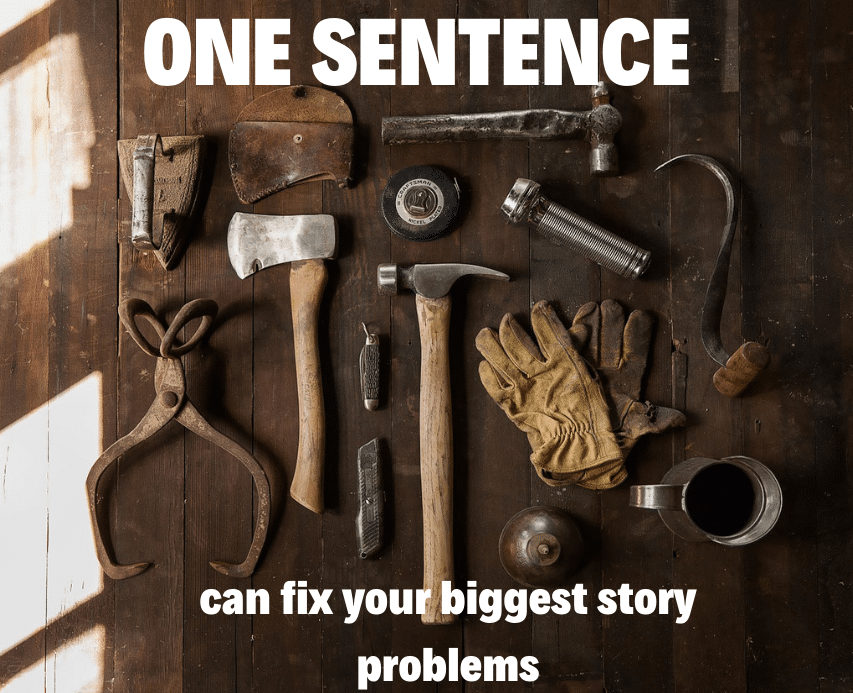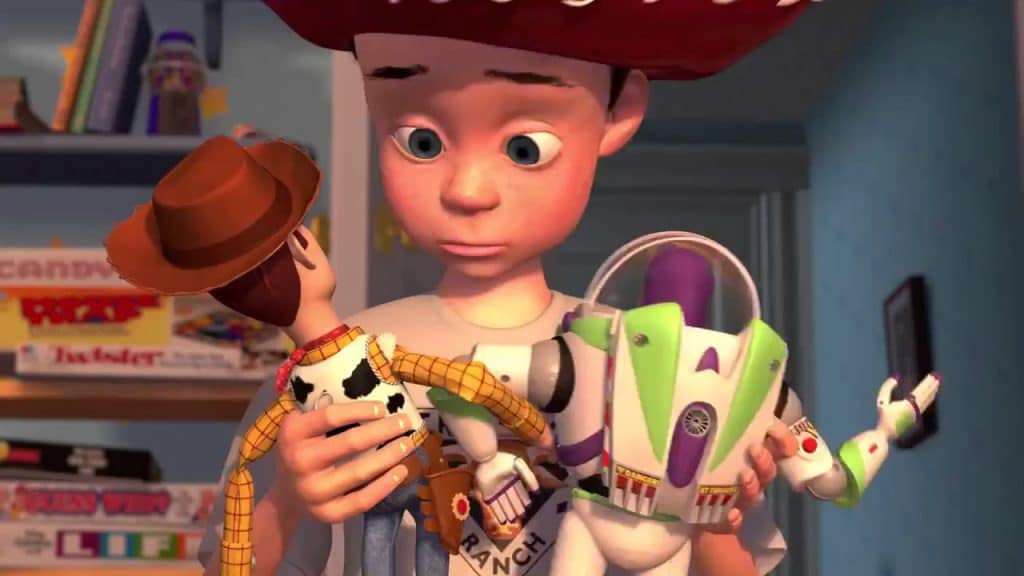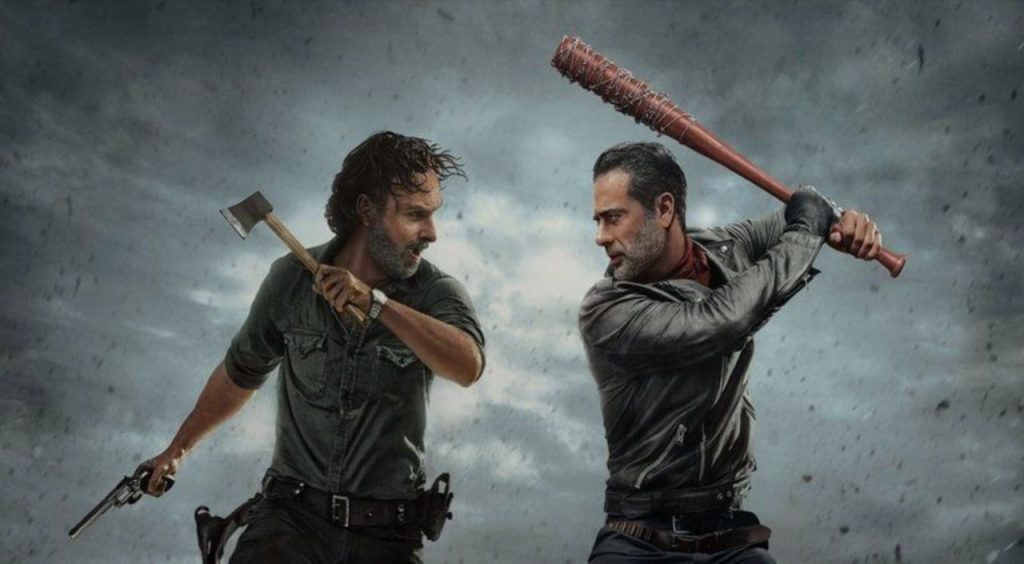👉 Write a book you're proud to publish 👈

How long have you been working on your current story? Weeks? Months? Years?
Are your revisions even getting you closer to the story you want to tell?
Or do you feel lost, unable to answer the most basic questions about your character and plot?
Do you sense something fundamental isn’t working in your story but have no clue what it is or where to begin?
ONE SENTENCE can save you time and frustration by fixing your biggest story problems.
This sentence reveals the central dilemma of your story and will not only help you improve the most important elements of your story but it will point you toward your Global Genre.
Keep reading if you’re finally ready to end this vicious cycle.
The Creative Spark
But first you need to understand when and why you get off track.
You are a creative individual inspired by life. Sometimes, maybe often, when you get a spark, a seed, a whisper of an idea, thousands of images or words begin to swirl in your head like lightning bugs on a hot summer night. And like a playful child, you latch onto those ideas and dive into writing.
You are so inspired that you write until you’ve filled an entire notebook and your hand cramps and you don’t stop to plan because you’re just not the planning type. Or maybe you are the planning type who as soon as an idea arrives you dig into it in every direction, then write a summary, then an outline, stressed to the max trying to force your idea and plot to work.
Neither of those ways are wrong. A huge part of writing is discovering the story you want to tell and don’t want to tell.
But the big headache begins when you finish that draft or outline and assess what you’ve written only to feel confused about what’s wrong and how to improve it. You know something essential is missing but you can’t put your finger on it. You write more, you outline more, you hit dead ends. Time passes. Frustration sets in. Maybe you give up.
You don’t need to feel ashamed. It’s a problem every single writer has faced at some point in their career. Luckily, feeling stuck is what pushes you to find an answer.
The problem isn’t necessarily what you wrote and the problem definitely isn’t you.
The problem goes way, way, way back to where you started, to the root of your story – all the way Back to YOUR IDEA.

Where Most Ideas Go Wrong
What if John Lasseter, the writer and director of Toy Story, had thought…“I have a great idea!…I’ll write a story about these toys that come to life and the boy who plays with them!”
That’s an interesting idea but it’s only telling part of the story. If he had begun writing from only that basic idea, which would be understandable because all kinds of ideas bubble up thinking about adventures a boy and his toys could have, he could write literally ANYTHING. There would be nothing to ground the story and nothing to guide him in a clear direction.
But the biggest issue to recognize in that basic idea is there isn’t any conflict.
CONFLICT is the base of all stories. Without conflict, there aren’t any problems to solve, if there aren’t any problems to solve, there isn’t any stress on the protagonist and without stress, the protagonist isn’t forced to change.
Stories are all about change…so if there isn’t any conflict, you don’t have a story.
But don’t worry. An incomplete idea can be strengthened and saved.

Good Stories are about ONE BIG CRISIS
Whether you write comedy or drama, the best stories feature a protagonist who, from the beginning, faces a strong moral choice and struggles with relatable human flaws. Stories that work play one argument out over and over, echoing throughout the genre, the scenes, characters, conflict, theme, sub-plots and all other story elements.
This argument is created by having a Central Dilemma in your story.
A dilemma (a.k.a. Crisis or moral choice) is a problem offering two possibilities, neither of which is acceptable or preferable. In the same way that scenes and acts have a Crisis, your entire story is the argument and exploration of one gigantic Crisis.
Think of the central dilemma of a story as an exploration of:
DO I DO THIS ONE THING I REALLY DON’T WANT TO DO?
IF I DON’T, THIS OTHER TERRIBLE THING IS GOING TO HAPPEN
If you build your story around a protagonist who has to make a decision between two seemingly impossible choices, their inner strength will be tested as they try to achieve their external goal.
Coming up with this central dilemma for your protagonist prior to writing or revising will create a strong foundation for your story, bring clarity to the scenes, characters and dialogue that will best serve your story and help you write a novel your reader can’t put down
I want to share a simple sentence that forces you to see if the three most fundamental elements are in your story – a challenged Protagonist, an overwhelming force of Antagonism and the one big Crisis that will cause conflict in your story. You don’t need to know everything about your story up front, just focus on those three pillars as you explore and reinforce your basic story idea.
*I added the forward to show you the three components of the sentence.
A SOMEBODY / who must do SOMETHING they really don’t want to do / or else this other really bad SOMETHING will happen.
Silence of the Lambs – A female FBI agent in training / must open her vulnerable psyche to a highly-intelligent, manipulative, psychopathic serial killer to find a dangerous serial killer on the loose / or more women will be mutilated and murdered.
The Walking Dead – An honorable, law-abiding Sheriff trying to maintain order during the apocalypse / must abandon his code of ethics and use any force necessary to protect his family and community / or they will become victims to thieves, torture and murder by outsiders who are trying to survive.
Crazy Rich Asians – An economics professor from a low income upbringing / must turn down the proposal of the man she loves because she would never control him like his wealthy, high society family / or live her life with the potential for resentment that she came between him and his family.
Can you see how the central dilemma lays a strong foundation for the story ideas by showing the protagonist, the force of antagonism and the conflict present by the single Crisis in the story?
A few more extraordinary things your Central Dilemma sentence will tell you
I’ll use Silence of the Lambs as the example.
A female FBI agent in training must open her vulnerable psyche to a highly-intelligent, manipulative, psychopathic serial killer to find a dangerous serial killer on the loose or more women will be mutilated and murdered.
1. Creating your own central dilemma sentence provides a helpful way to double check and revise your story idea’s foundation to make sure you have a Protagonist, force of Antagonism and a Crisis question that brings up conflict.
- Protagonist = Female FBI trainee
- Force of Antagonism = Two serial killers
- Crisis = She must open her vulnerable psyche to a psychopath in hopes to stop women from being mutilated and murdered
2. It shows you the internal dilemma brought up by the external goal.
- Internal Dilemma = If she doesn’t open her psyche to a psychopath, more women will die
- External Goal = To find the serial killer on the loose
3. It can help you brainstorm possible Global story Inciting Incidents that force your protagonist to face their central dilemma. And can guide you to your Global Crisis, Global Climax and Global Resolution.
- Global Inciting Incident = (implied by the sentence) You can assume the FBI trainee was somehow connected with the psychopath serial killer knowing they would have insight to find the serial killer on the loose
- Global Crisis = The FBI trainee will face off with the serial killer on the loose.
- Global Climax = Most successful stories are prescriptive, so if this writer wanted a heroic ending, it’s easy to assume the FBI trainee will find and stop the serial killer on the loose.
- Global Resolution = Potentially, the FBI Trainee will become an FBI agent because of their heroism.
4. It even points you in the direction of your Global Genre
- Silence of the Lambs & The Walking Dead – both have life and death at stake in the central dilemma sentence which points to the genres that have a life or death global value. That narrows it down to Thriller (SOTL), Horror (TWD) or Action (none).
- Crazy Rich Asians – love is at stake which brings up the global story value of love/hate which points me directly to a Love story.
It’s actually a truly remarkable sentence if you look at all it can do for you.
Ask yourself, what Crisis question can your protagonist face at the core of your story?
Why is your character is ultimately afraid of making that choice? If they’re not afraid, then their central dilemma isn’t strong enough.
Your force of Antagonism
You can use that Crisis question to get to the heart of your antagonist’s goal and see how it can make your protagonist’s life harder.
Sometimes the protagonist and antagonist dilemmas are directly opposed to each other where the winner takes all. In Wonder Woman, Ares, the god of war, wants to restore paradise on Earth by destroying mankind while Diana sees the good in humans and wants to protect them. The only way to do that is to destroy Ares.
And sometimes the protagonist and antagonist dilemmas are the same. In The Walking Dead, The Governor, Neegan and even Merle Dixon face the same dilemma as Rick Grimes – do whatever you have to do to keep your people alive.
Practice Practice Practice
It might be challenging at first to create a central dilemma for your story. But you will get better if you create sentences for the stories you like.
If you know your Global Genre but are struggling with finding a strong external goal or internal transformation for your protagonist create your own central dilemma sentence for masterworks in your genre. It just might be the key you need to unlock the answers to your story problems.
If this is hard, don’t worry. Just practice on other stories. Practice over and over. You are pushing to the edge of your current skill level and it just takes repetition.
WHY assess your story’s central dilemma?
To Save YOU Time. This one is simple and, I would think, the most important. You have a limited amount of time to work on your story everyday, in fact you have a limited amount of time in life. I know you don’t want to waste time meandering and chasing dead ends, even if they’re not always pointless. The quicker you get to the Crisis at the heart of your story, the quicker you can write, revise and move on to your next project.
To Save Others Time. If your desire is to publish your story, whether traditional or self-publish, the clearer your story is from the beginning, the smoother the editorial process will go. Having a strong central dilemma as your foundation allows you to show up professionally and respectfully and save time for all parties involved.
For Story Clarity. When you take your idea and turn it into a strong concept with a solid foundation, you create clarity for yourself of what your story is about, who your protagonist and antagonist are, what the conflict is that will keep readers turning pages, and how to tell the best story you possibly can.
For your Sanity. Last but not least. How often have you figuratively and literally pulled your hair out trying to “figure out your story”? Creating a solid foundation for your story idea by focusing on your central dilemma will create more ease and actually be fun to write.
You Got This!
If you nail your story’s central dilemma early on, you will solve your:
- Global Genre
- Global Inciting Incident, Global Crisis, Global Climax and Global Resolution
- Plot
- Protagonist
- Force of Antagonism
- Conflict
- Writing scenes that advance the story and pinpointing the ones that don’t
- Dialogue
- External goal
- Internal dilemma
If you plan to be a writer for life, creating a strong foundation for your story early on, by clarifying your protagonist’s central dilemma, is the most important skill you can learn.
*Need help discovering your story’s central dilemma and creating a strong Story Foundation for your novel or screenplay? If you are interested in working with Courtney you can schedule a FREE 30-minute call to talk about what you’re working on and how she can help!
**Create and post a Central Dilemma sentence for your favorite story in the comments below!